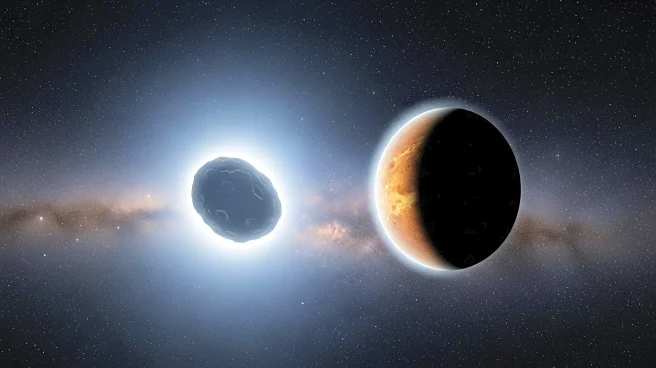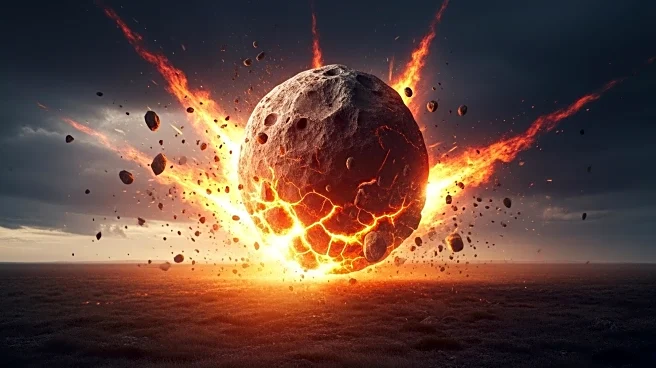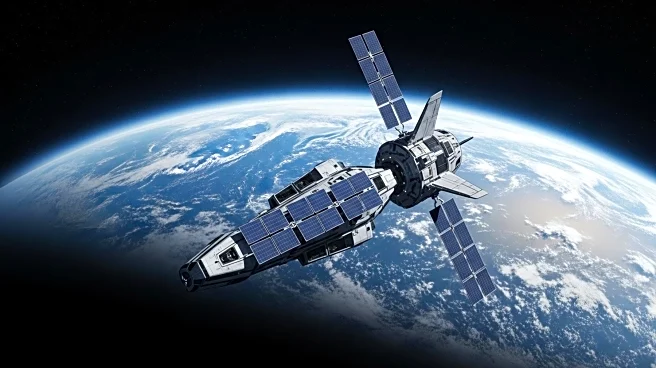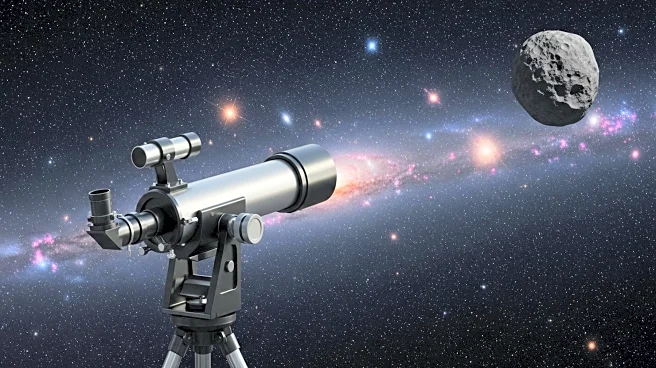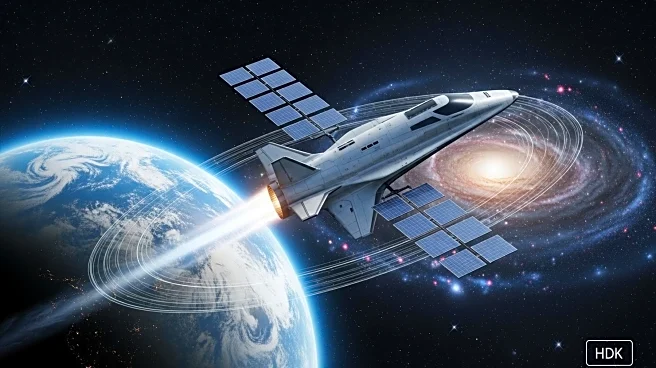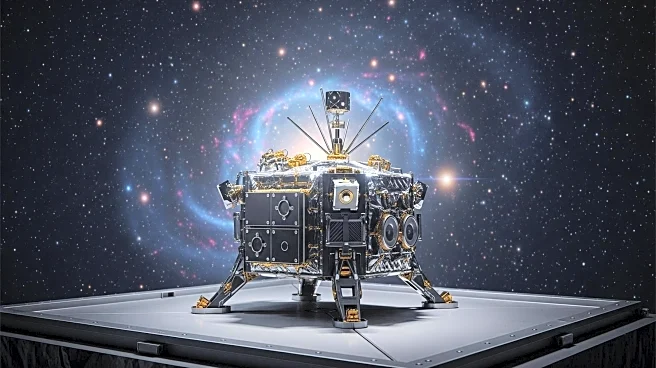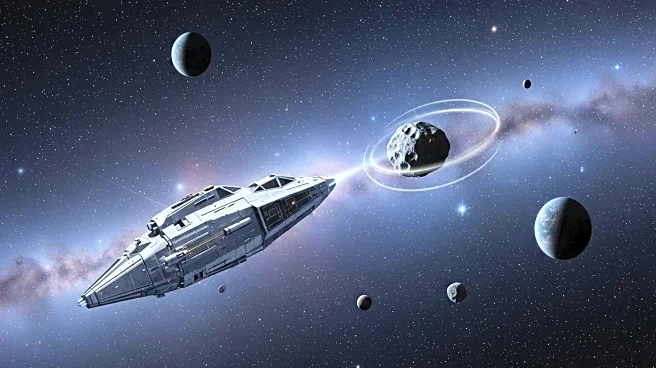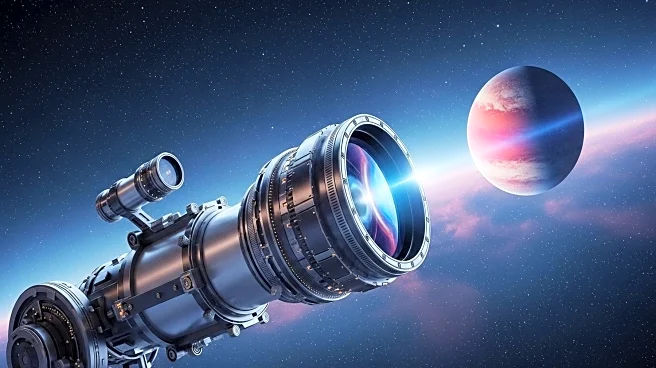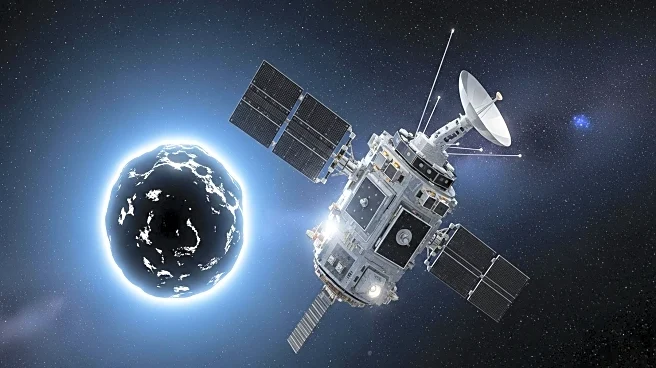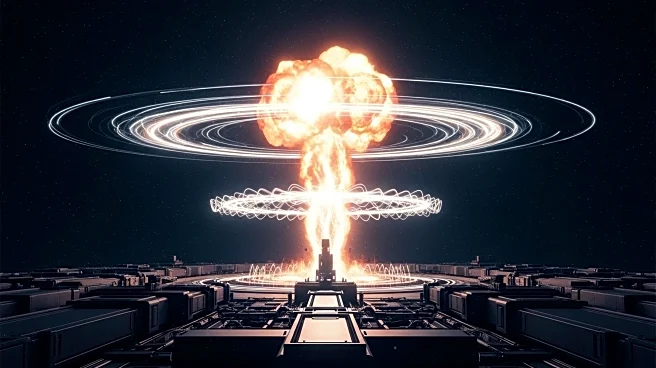What's Happening?
An international study led by researchers at São Paulo State University has identified a population of asteroids that share Venus's orbit, posing a potential threat to Earth. These 'Venusian co-orbital asteroids' are difficult to detect due to their position in the sky, making them invisible to current telescopic observations. The study, published in Astronomy & Astrophysics, utilized analytical modeling and long-term numerical simulations to track the dynamics of these objects. The asteroids, which enter into a 1:1 resonance with Venus, complete one revolution around the sun in the same time as the planet. Their highly eccentric and unstable orbits mean they can transition between safe configurations near Venus and potentially dangerous proximity to Earth. The study highlights the risk of these asteroids crossing Earth's orbit, with simulations indicating that some could come dangerously close, potentially leading to impacts that could devastate large cities.
Why It's Important?
The discovery of these 'invisible' asteroids is significant as it reveals a potential threat that has been overlooked due to observational biases. These asteroids, if they collide with Earth, could cause large-scale devastation, especially in densely populated areas. The study emphasizes the need for improved detection methods, as current telescopes like the Vera Rubin Observatory may not be able to consistently observe these asteroids. The potential impacts of these asteroids could release energy equivalent to hundreds of megatons, forming craters several kilometers wide. This underscores the importance of planetary defense strategies that account for both visible and currently undetectable threats. The research suggests that space telescopes focused on regions close to the sun could provide more comprehensive coverage, aiding in the detection of these elusive objects.
What's Next?
The study suggests that missions such as NASA's Neo Surveyor and China's proposed Crown could be instrumental in detecting these asteroids at low solar elongations from Venus-orbiting positions. These missions could offer continuous coverage, improving the chances of identifying and tracking these potentially hazardous objects. The research also points to the need for planetary defense strategies to consider not only visible threats but also those that remain undetected. As the asteroids' captures in resonance with Venus are ephemeral, lasting about 12,000 years, they may eventually evolve into trajectories close to Earth or be ejected from the solar system. This highlights the importance of ongoing monitoring and research to mitigate potential risks.
Beyond the Headlines
The study provides insights into the complex gravitational interactions that lead to the temporary capture of asteroids in resonance with Venus. These interactions, primarily with Jupiter and Saturn, divert asteroids from the main belt to internal orbits. The research contributes to understanding the dynamics of planetary systems and the evolution of asteroids. It also raises ethical considerations regarding the prioritization of resources for planetary defense and the development of technologies to detect and mitigate asteroid threats. The findings could influence future policies and international collaborations aimed at protecting Earth from potential asteroid impacts.

